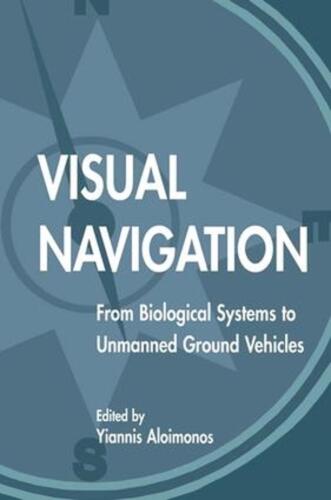Your cart is currently empty!
Tag: Biological
Genomics yields biological and phenotypic insights into bipolar disorder
The management group for this paper was led by O.A.A. The management group comprised a subset of authors responsible for the study design, conduct, primary and final interpretation, and included A.M., A.J.F., N.M., A.D.F., R.A.O., H.J.E., K.S.O. and O.A.A; this group was also responsible for primary drafting and editing of the manuscript. The analytical team, led by K.S.O., was responsible for the main analyses presented in the paper, and included M. Koromina, T.v.d.V., T.B., F.S.D., J.M.K.Y., K.-H.L., X.W., J.R.I.C., B.L.M., C.C.M, A.V.R., P.A.L., E. Koch, A. Harder, N.P., J.B. and K.S.O. Imputation, quality control and GWAS were conducted by K.S.O., M. Koromina, B.L.M., K.-H.L., X.W. and J.M.K.Y. Heritability and genetic correlation analyses were performed by K.S.O. MiXeR was done by K.S.O. and A. Shadrin. Polygenic association was conducted by T.v.d.V., T.B., B.L.M. and P.A.L. Gene and gene set analyses were done by K.S.O., C.C.M. and A.V.R. Cell-type-specific analyses were performed by F.S.D. Single-nucleus RNA sequencing enrichment was done by A. Harder and J.H.-L. Fine-mapping was conducted by M. Koromina. Rare variant analyses were performed by C. Liao. QTL integrative analyses were done by M. Koromina, T.B. and F.S.D. Enhancer–promoter interactions were analysed by J.B. Credible gene prioritization was performed by K.S.O. and M. Koromina. Temporal clustering was done by N.P. Drug enrichment was conducted by J.R.I.C. and E. Koch. Clinical assessments were performed by A.A., A.C., A.C.-B., A.D.B., A.D.F., A.E.V., A.H.Y., A. Havdahl, A.M., A.M.M., A. Perry, A. Pfennig, A.R., A. Serretti, A.V., B. Carpiniello, B.E., B.S., B.T.B., C.A.M., C. Lavebratt, C. Loughland, C.N.P., C.O., C.S., D.D., D.H., D.J.M., D. J. Smith, D.M., D.Q., E.C.S., E.E.T., E.J.R., E. Kim, E. Sigurdsson, E.S.G., E. Stordal, E.V., E.Z.R., F. Senner, F.S.G., F. Stein, F. Streit, F.T.F., G.B., G.K., G.M., H.A., H.-J.L., H.M., H.V., H.Y.P., I.D.W., I.J., I.M., I.R.G., J.A.R.-Q., J.B.P., J.B.V., J.G.-P., J. Garnham, J. Grove, J.H., J.I.N., J. L. Kalman, J. L. Kennedy, J.L.S., J. Lawrence, J. Lissowska, J.M.P., J.P.R., J.R.D., J.W.S., K.A., K.D., K.G.-S., K.J.O., L.A.J., L.B., L.F., L. Martinsson, L. Sirignano, L.T., L.Z., M.A., M. Bauer, M. Brum, M. Budde, M.C., M.C.O., M.F., M.G., M.G.-S., M.G.M., M.H.R., M. Haraldsson, M. Hautzinger, M.I., M.J.G., M.J.O., M. Kogevinas, M. Landén, M. Lundberg, M. Manchia, M. Mattheisen, M.P.B., M.P.V., M. Rietschel, M. Tesfaye, M.T.P., M. Tesli, N.A.-R., N.B., N.B.-K., N.C., N.D., N.G.M., N.I., O.A.A., O.B.S., O.K.D., O.M., P. B. Mitchell, P. B. Mortensen, P.C., P.F., P.M.C., R.A., R.B., R.S.K., S.A.K., S. Bengeser, S.K.-S., S.L., S.L.M., S.P., T.G.S., T.H., T.H.H., T.K., T.M.K., T.O., T.S., T.W., T.W.W., U.D., U.H., V.M., W.B., W. Maier and W. Myung. Data processing and analyses were performed by A.C., A.D.B., A.F.P., A. Harder, A.J.F., A.M.D., A. Shadrin, A.V.R., A.X.M., B. Coombes, B.L.M., B.M.-M., B.M.B., B.S.W., C.B.P., C. Cruceanu, C.C.M., C. Chatzinakos, C. Liao, C.M.N., C.S.W., C. Terao, C. Toma, D.A., D.M.H., D.W.M., E.A., E.A.S., E.C.B., E.C.C., E. Koch, E.M., E.S.G., F.D., F.J.M., F.S.D., G.A.R., G.B., G.P., G.T., H.-C.C., H. Stefansson, H. Sung, H.-H.W., I.C., J.B., J.C.-D., J.D.M., J.F., J.F.F., J.G.T., J. Grove, J.H.-L., J.K., J.M.B., J.M.F., J.M.K.Y., J.R.I.C., J.S.J., J.T.R.W., K.K., K.-H.L., K.S.O., L.G.S., L.J., L. Milani, L. Sindermann, M.-C.H., M.I., M.J.C., M. Koromina, M. Leber, M.M.N., M. Mattheisen, M. Ribasés, M. Rivera, M.S.A., M.S., M. Tesfaye, N.B.F., N.I., N.M., N.P., N.W.M., O.B.S., O.F., O.K.D., P.A.H., P.A.L., P.A.T., P.D.S., P.F.S., P.H., P.-H.K., P.M., P.P.Z., P.R., Q.S.L., R.J.S., R.M.M., R.Y., S.A., S. Børte, S. Cichon, S.D., S.D.G., S.E.M., S.H., S.H.W., S.J., S.R., S.-J.T., T.A.G., T.B., T.B.B., T.C., T.D.A., T.E.T., T.F.M.A., T.O., T.S., T.v.d.V., T.W., T.W.M., V.E.-P., W. Myung, X.W. and Y.K. Funding was obtained by A.C., A.D.B., A.H.Y., A.M.M., B.E., B.M.N., B.T.B., C.N.P., C. Pantelis, C.S.W., C. Terao, D. J. Stein, D.M., D.S., E.S.G., F.B., F.J.M., G.A.R., G.B., G.P.P., G.T., H.J.E., I.B.H., I.J., I.M., I.N.F., J.A.K., J.B.P., J.B.V., J.I.N., J.M.B., J.M.F., J.R.D., J.W.S., K.H., L.A., L.A.J., L.B., M.A., M. Boehnke, M.C.O., M.F., M.G.-S., M.H.R., M.I., M.J.G., M.J.O., M. Leboyer, M. Landén, M.M.N., M.N., M. Rietschel, M.S., M.T.P., N.C., N.G.M., N.I., O.A.A., O.M., P.A.T., P. B. Mitchell, P. B. Mortensen, P.P.Z., P.R.S., R.A.O., R.J.S., R.M.M., S.E.M., S.J., S.L., T.B.B., T.G.S., T.O., T.S., T.W., T.W.W., W.H.B. and Y.K. Recruitment and genotyping were performed by A.C., A.D.B., A.D.F., A.E.V., A.H.F., A.J.F., A.M.M., A.M., A.R., A. Serretti, A. Squassina, B. Carpiniello, B.-C.L., B.E., B.M.-M., B.M.N., B.T.B., C.A.M., C.B.P., C. Lochner, C.M.N., C.M.O., C.N.P., C. Pantelis, C. Pisanu, C.S.W., D.C.W., D.D., D.J.K., E.A., E.S.G., E. Stordal, E.V., E.Z.R., F.A.H., F.B., F.J.M., F.M., F.S.G., F. Stein, G.A.R., G.B., G.D.H., G.M., G.P.P., G.T., H.J.E., H. Stefansson, H.-H.W., I.B.H., I.D.W., I.J., J.A.R.-Q., J.B.V., J.H., J.H.K., J.H.-L., J.I.N., J.J.L., J. Lissowska, J.M.B., J.M.F., J.M.P., J.R.D., J.R.K., J.-W.K., J.W.S., J.-A.Z., K.H., K.J.O., K.S., L.A., L.A.J., L.J.S., L. Milani, L.T., M.A., M. Aslan, M.C.O., M.F., M.G., M.G.-S., M.I., M.J.C., M.J.G., M.J.O., M. Leboyer, M. Landén, M.M.N., M. Manchia, M.N., M. Ribasés, M. Rietschel, M.S., M.T.P., N.C., N.G.M., N.I., O.A.A., O.M., P.A.L., P. B. Mitchell, P. B. Mortensen, P.D.H., P.F., P.-H.K., P.R., P.R.S., Q.S.L., R.A., R.A.O., R.S.K., S.A.P., S. Bengesser, S. Cichon, S. Catts, S.E.M., S.L.M., S.R., T.G.S., T.H., T.K., T.S., T.W., T.W.W., U.D., U.S., V.J.C., W.H.B., W. Myung and Y.K.L. Numerous authors beyond the initial writing group contributed to data interpretation and provided edits, comments and suggestions to the paper. All authors reviewed the manuscript critically for important intellectual content and approved the final version of the manuscript for publication. The Chair of the PGC is P.F.S. The Bipolar Disorder Working Group of the PGC is led by O.A.A.
Bipolar disorder is a complex mental health condition that affects millions of people worldwide. While the exact causes of bipolar disorder are still not fully understood, recent advancements in genomics have provided valuable insights into the biological and phenotypic aspects of this disorder.Genomics, the study of an organism’s complete set of DNA, has allowed researchers to identify genetic variations that may play a role in the development of bipolar disorder. By analyzing the genomes of individuals with bipolar disorder, scientists have been able to pinpoint specific genes and genetic pathways that are associated with the disorder.
One of the key findings from genomic studies of bipolar disorder is the involvement of genes related to neurotransmitter signaling, synaptic function, and circadian rhythms. These genes are known to play a crucial role in regulating mood, behavior, and sleep patterns, all of which are disrupted in individuals with bipolar disorder.
In addition to identifying genetic factors, genomics has also shed light on the phenotypic aspects of bipolar disorder. By studying the patterns of gene expression and protein activity in individuals with bipolar disorder, researchers have been able to uncover the underlying biological mechanisms that contribute to the disorder’s symptoms.
Furthermore, genomics has enabled the development of personalized treatment approaches for individuals with bipolar disorder. By identifying genetic variations that may influence a person’s response to medications, doctors can tailor treatment plans to better suit each individual’s unique genetic makeup.
Overall, genomics has significantly advanced our understanding of bipolar disorder, providing valuable insights into its biological and phenotypic underpinnings. By continuing to study the genetic basis of bipolar disorder, researchers hope to uncover new therapeutic targets and improve treatment outcomes for individuals with this challenging condition.
Tags:
- Genomics
- Bipolar disorder
- Biological insights
- Phenotypic insights
- Mental health
- Genetic research
- Psychiatry
- Mood disorders
- Genetic factors
- Bipolar disorder research
#Genomics #yields #biological #phenotypic #insights #bipolar #disorder
Trump to sign executive orders proclaiming there are only two biological sexes, halting diversity programs
President-elect Donald Trump plans to sign executive orders proclaiming that the U.S. government will recognize only two sexes, male and female, and ending “radical and wasteful” diversity, equity and inclusion programs inside federal agencies, according to senior White House officials.
The White House officials grouped both orders under the incoming Trump administration’s wider “restoring sanity” agenda. The orders were detailed by an incoming official on a phone call Monday ahead of Trump’s swearing-in ceremony inside the Capitol Rotunda.
The official presented the gender order as part of a policy “defending women from gender ideology extremism and restoring biological truth to the federal government.”
The order aims to require that the federal government use the term “sex” instead of “gender,” and mandates that Cabinet secretaries “ensure that official government documents, including passports and visas, reflect sex accurately.”
The order will also prevent taxpayer funds from being used for gender-transition health care and add “privacy in intimidate spaces” in facilities such as prisons, migrant shelters and rape shelters.
Trump campaigned on rolling back protections for transgender people and emphasized the issue in television advertisements, including a commercial that aired frequently in key swing states such as Pennsylvania.
The second order detailed by the incoming White House official aims to end “radical and wasteful government DEI programs and preferencing” inside the federal government.
The official said the new administration will hold monthly meetings with the deputy secretaries of key agencies to “assess what type of DEI programs are still discriminating against Americans and figure out ways to end them.”
In recent years, Trump and conservatives have assailed DEI initiatives across American society, characterizing them as discriminatory.
In the weeks leading up to Trump’s return to power, major corporations such as Meta, McDonald’s and Walmart have announced they are ending some or all of their diversity practices.
Trump is set to take office at 12 p.m. ET Monday.
In a shocking move, President Trump is set to sign a series of executive orders that will proclaim there are only two biological sexes, male and female, and halt diversity programs in government agencies and institutions.This controversial decision is sure to spark outrage among LGBTQ+ advocates and supporters of diversity and inclusion. It is a clear attempt to roll back progress made in recognizing and protecting the rights of transgender and non-binary individuals.
By denying the existence of more than two biological sexes, the Trump administration is perpetuating harmful stereotypes and erasing the experiences of countless individuals who do not fit within the traditional gender binary.
Furthermore, halting diversity programs will only serve to further entrench systemic inequalities and discrimination in our society. These programs are essential in promoting equal opportunities for marginalized communities and fostering a more inclusive and equitable workplace.
It is crucial that we stand up against these discriminatory and regressive policies and continue to fight for the rights and dignity of all individuals, regardless of their gender identity or expression. Let your voice be heard and join the fight for a more just and inclusive society. #ProtectTransRights #DiversityMatters
Tags:
- Trump executive orders
- Biological sexes
- Diversity programs
- Trump administration
- Gender identity
- LGBTQ rights
- Social policy
- Presidential actions
- Gender discrimination
- Equality initiatives
#Trump #sign #executive #orders #proclaiming #biological #sexes #halting #diversity #programs

Unlocking the Potential of HF7-SU31C for Enhanced Biological Activity
HF7-SU31C is a novel compound that has shown great promise in enhancing biological activity in various applications. This compound has been the focus of much research in recent years due to its potential to unlock new possibilities in the field of biotechnology and medicine.One of the key features of HF7-SU31C is its ability to target specific biological pathways, making it a valuable tool for researchers looking to enhance the effectiveness of various biological processes. This compound has been shown to have a high affinity for certain receptors and enzymes, allowing it to modulate their activity in a precise and controlled manner.
In addition to its targeted approach, HF7-SU31C also exhibits a high degree of potency, meaning that only small amounts of the compound are needed to achieve significant effects. This makes it a cost-effective option for researchers looking to enhance biological activity without the need for large quantities of expensive reagents.
Furthermore, HF7-SU31C has been found to have a low toxicity profile, making it a safe option for use in a variety of biological applications. This compound has been tested extensively in vitro and in vivo, with promising results indicating its potential as a valuable tool for enhancing biological activity in a wide range of settings.
One area where HF7-SU31C shows particular promise is in the development of new drug therapies. By targeting specific biological pathways, this compound has the potential to enhance the effectiveness of existing drugs or to unlock new therapeutic possibilities. Researchers are currently exploring the use of HF7-SU31C in combination with existing drugs to improve their efficacy and reduce side effects.
Overall, HF7-SU31C is a compound with significant potential for enhancing biological activity in a variety of applications. Its targeted approach, high potency, and low toxicity make it a valuable tool for researchers looking to unlock new possibilities in biotechnology and medicine. As further research is conducted, it is likely that HF7-SU31C will continue to play a key role in advancing our understanding of biological processes and developing new therapies for a range of diseases.
#Unlocking #Potential #HF7SU31C #Enhanced #Biological #Activity,hf7-su31c
1992 #1 ADAPTIVE BEHAVIOR Artificial Life NEURAL NETWORKS Biological Simulation

1992 #1 ADAPTIVE BEHAVIOR Artificial Life NEURAL NETWORKS Biological Simulation
Price : 7.13
Ends on : N/A
View on eBay
In 1992, the field of adaptive behavior saw groundbreaking advancements in artificial life, neural networks, and biological simulation. Researchers and scientists made significant progress in understanding and replicating adaptive behaviors in artificial systems, paving the way for advancements in robotics, AI, and computational biology.One of the key developments in 1992 was the introduction of neural networks as a powerful tool for simulating adaptive behavior. Neural networks, inspired by the structure of the human brain, allowed researchers to create sophisticated models capable of learning and adapting to their environment. This breakthrough opened up new possibilities for studying complex behaviors in artificial systems and laid the foundation for future advancements in AI and machine learning.
Another major milestone in 1992 was the development of biological simulation techniques that allowed researchers to study and replicate adaptive behaviors seen in nature. By simulating biological processes and evolutionary mechanisms, scientists were able to gain insights into the mechanisms underlying adaptive behavior and use this knowledge to design more efficient and robust artificial systems.
Overall, the year 1992 marked a significant step forward in the field of adaptive behavior, with advancements in artificial life, neural networks, and biological simulation laying the groundwork for future research and innovation in the field. As we look back on these developments, we can appreciate the pioneering work of researchers who helped shape the future of adaptive behavior and artificial intelligence.
#ADAPTIVE #BEHAVIOR #Artificial #Life #NEURAL #NETWORKS #Biological #Simulation
Plausible Neural Networks for Biological Modelling by H.A. Mastebroek (English)

Plausible Neural Networks for Biological Modelling by H.A. Mastebroek (English)
Price : 125.44
Ends on : N/A
View on eBay
Plausible Neural Networks for Biological Modelling by H.A. MastebroekIn the field of biological modelling, the use of neural networks has become increasingly popular due to their ability to mimic the complex interactions and behaviors of biological systems. In his groundbreaking research, H.A. Mastebroek explores the concept of plausible neural networks for biological modelling, aiming to create more accurate and reliable models of biological processes.
Mastebroek’s work focuses on developing neural networks that are not only capable of accurately simulating biological systems, but also of providing meaningful insights and predictions. By carefully designing the architecture and parameters of these networks, Mastebroek is able to train them using real biological data, allowing for more realistic and accurate simulations.
One of the key advantages of using neural networks in biological modelling is their ability to learn and adapt to new information, making them highly versatile and capable of capturing the dynamic nature of biological systems. This flexibility allows for more accurate predictions and a better understanding of complex biological processes.
Overall, Mastebroek’s research on plausible neural networks for biological modelling represents a significant step forward in the field, offering new insights and approaches for creating more accurate and reliable models of biological systems. His work has the potential to revolutionize the way we study and understand the complexities of the natural world.
#Plausible #Neural #Networks #Biological #Modelling #H.A #Mastebroek #English
20g Eosin B, biological stain, fluorescent dye,

20g Eosin B, biological stain, fluorescent dye,
Price : 17.80
Ends on : N/A
View on eBay
Eosin B: A Versatile Biological Stain and Fluorescent DyeEosin B is a commonly used biological stain and fluorescent dye that has a wide range of applications in the field of biology and medicine. This versatile dye is known for its vivid red color and ability to bind to a variety of biological molecules, making it an invaluable tool for researchers and scientists.
One of the key features of Eosin B is its fluorescent properties, which allow for easy visualization and detection of specific biological structures under a fluorescence microscope. This makes it particularly useful for studying cell morphology, tissue architecture, and protein localization in biological samples.
In addition to its fluorescent properties, Eosin B also has excellent staining capabilities, making it ideal for highlighting specific structures in histological samples. It is commonly used in hematoxylin and eosin (H&E) staining protocols to differentiate between different types of cells and tissues, providing valuable information about their structure and function.
Overall, Eosin B is a powerful tool for researchers and clinicians alike, offering a unique combination of staining and fluorescent properties that make it indispensable for a wide range of biological applications. Whether you’re studying cell biology, histology, or pathology, Eosin B is sure to be a valuable addition to your research toolkit.
#20g #Eosin #biological #stain #fluorescent #dye, IT Solutions
1993 #1 ADAPTIVE BEHAVIOR Artificial Life NEURAL NETWORKS Biological Simulation

1993 #1 ADAPTIVE BEHAVIOR Artificial Life NEURAL NETWORKS Biological Simulation
Price : 6.71
Ends on : N/A
View on eBay
In 1993, the world of artificial intelligence and biological simulation was revolutionized with the publication of “#1 ADAPTIVE BEHAVIOR Artificial Life NEURAL NETWORKS.” This groundbreaking work delved into the realm of neural networks and their application in creating adaptive behaviors in artificial life forms.The study explored how biological principles could be integrated into the development of artificial intelligence, leading to more lifelike and responsive simulations. By simulating the behavior of neural networks in artificial life forms, researchers were able to create lifelike behaviors that adapted to changing environments.
This pivotal research paved the way for further advancements in the field of artificial intelligence and biological simulation, laying the foundation for the development of more sophisticated and intelligent systems. The publication of “#1 ADAPTIVE BEHAVIOR Artificial Life NEURAL NETWORKS” in 1993 marked a significant milestone in the evolution of AI and continues to inspire researchers to push the boundaries of what is possible in the field.
#ADAPTIVE #BEHAVIOR #Artificial #Life #NEURAL #NETWORKS #Biological #Simulation
Biological and Computer Vision
Price:$55.99– $42.11
(as of Dec 26,2024 14:59:33 UTC – Details)
Publisher : Cambridge University Press (February 4, 2021)
Language : English
Paperback : 274 pages
ISBN-10 : 1108705006
ISBN-13 : 978-1108705004
Item Weight : 1.35 pounds
Dimensions : 6.69 x 0.62 x 9.61 inches
Biological and Computer Vision: Exploring the Similarities and DifferencesBiological vision, also known as human vision, and computer vision are two fascinating fields that study how living organisms and machines perceive and interpret visual information. While they both involve the processing of visual data, there are notable differences between these two areas of study.
Biological vision relies on the complex network of cells in the human eye and brain to detect, process, and interpret visual stimuli. Our eyes capture light and convert it into electrical signals that are then sent to the brain for further processing. The brain then combines these signals with existing knowledge and memories to create a coherent visual experience. This process is incredibly fast and efficient, allowing us to effortlessly navigate our surroundings and recognize objects, faces, and scenes.
On the other hand, computer vision involves the development of algorithms and technologies that enable machines to interpret and understand visual information. These systems use digital cameras and sensors to capture images or video, which are then processed using machine learning and artificial intelligence techniques. Computer vision algorithms can be trained to recognize objects, detect patterns, and make decisions based on visual data.
Despite these differences, there are also many similarities between biological and computer vision. Both rely on pattern recognition, feature extraction, and object detection to interpret visual information. Both fields can benefit from each other, with insights from biological vision informing the development of computer vision algorithms and vice versa.
In conclusion, the study of biological and computer vision offers a unique opportunity to understand how living organisms and machines perceive the world around them. By exploring the similarities and differences between these two fields, researchers can continue to push the boundaries of visual perception and develop innovative technologies that enhance our understanding of the world.
#Biological #Computer #Vision
The Secret Language of Cells: What Biological Conversations Tell Us About the Brain-Body Connection, the Future of Medicine, and Life Itself
Price: $0.00
(as of Dec 24,2024 21:48:03 UTC – Details)Customers say
Customers find the book’s explanation of complex information clear and easy to understand. They describe it as an engaging read for anyone interested in health or biology.
AI-generated from the text of customer reviews
The Secret Language of Cells: What Biological Conversations Tell Us About the Brain-Body Connection, the Future of Medicine, and Life ItselfHave you ever stopped to think about the incredible communication network that exists within your own body? Every day, billions of cells are sending messages to each other, coordinating their activities to keep you alive and healthy. This complex system of communication is known as the secret language of cells.
Recent research has revealed that cells communicate with each other in ways that are far more sophisticated than we ever imagined. They use a variety of signaling molecules, such as hormones, neurotransmitters, and cytokines, to send messages to each other and coordinate their activities. This communication is essential for maintaining the balance of the body and ensuring that all systems are functioning properly.
One area where this communication is particularly important is in the brain-body connection. The brain and the body are constantly sending signals to each other, ensuring that everything is working as it should. When this communication breaks down, it can lead to a wide range of health problems, including mental health disorders, autoimmune diseases, and even cancer.
Understanding the secret language of cells has the potential to revolutionize the field of medicine. By deciphering the messages that cells are sending to each other, researchers may be able to develop new treatments for a wide range of diseases. This could lead to more targeted and effective therapies, with fewer side effects and better outcomes for patients.
But the implications of this research go far beyond medicine. The secret language of cells may also hold the key to understanding the very nature of life itself. By studying how cells communicate and cooperate with each other, scientists are gaining new insights into the fundamental processes that govern all living organisms.
In the end, the secret language of cells reminds us of the incredible complexity and beauty of the natural world. It is a testament to the power of evolution and adaptation, and a reminder that we are all connected in ways that we are only beginning to understand. As we continue to unravel the mysteries of the biological world, we may find that the secret language of cells holds the key to unlocking even more profound truths about ourselves and our place in the universe.
#Secret #Language #Cells #Biological #Conversations #BrainBody #Connection #Future #Medicine #Life,basicnology



